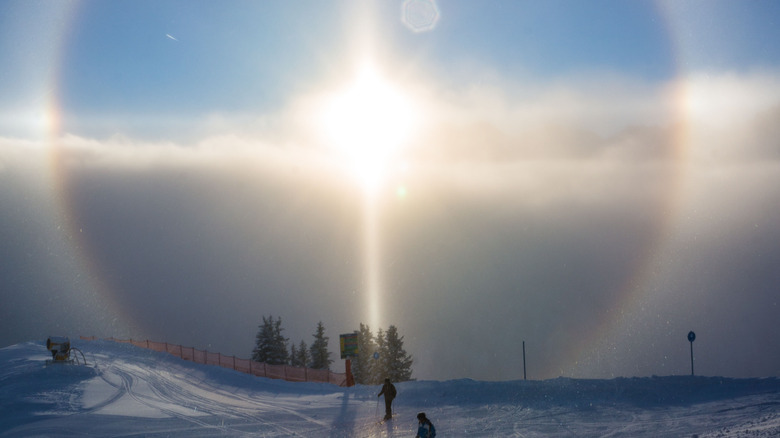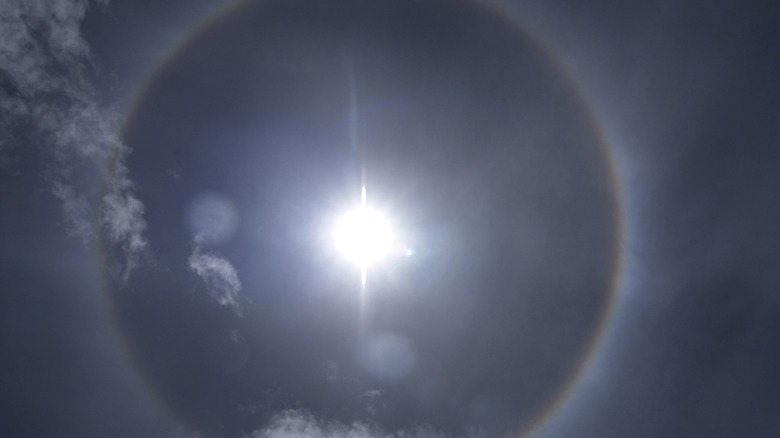Sky Halos: Here's What We Know About This Natural Phenomenon
Sky halos are the scientific name for that ring we sometimes see around the sun or moon. Alternatively referred to as sun or moon halos (depending upon which description applies) these iridescent circles seem to highlight the object they surround, making for quite an Instagram-worthy scene.
Our ancestors claimed they could indicate rain, a wise-tale that turns out to be rooted in truth (via EarthSky). This is because the high cirrus clouds that streak the sky to create these halos can sometimes mean a storm is on the way. They are like a tiny clue, situated in an otherwise clear sky, telling you to grab your umbrella. But, if you're like most people, you will probably pick up your phone's camera instead. Due to this instinct, the internet is brimming with pictures of pre-storm sky halos setting the stage for upcoming weather events like Hurricane Sandy. In addition to giving the sky a colorful backdrop for the sun or moon, and giving the earth a clue that wacky weather might be on the way, these 22-degree halos are also a custom experience.
No two people see a sky halo exactly the same way
One of the most fascinating aspects of sky halos is the fact that no two people see them exactly the same. Like other things in nature, think snowflakes and zebra stripes (via BBC), sky halos are 100% unique. So how does this happen? How can two people stand side by side and see something similar but different in the same sky at the same time and even still have the ability to capture it in pictures?
The answer is crystal clear, or more precisely, crystal refraction (via EarthSky). When light splits around the millions of ice crystals formed in the high cirrus clouds, it creates a reflection that is unique to your eye. So while you and the person beside you are both seeing crystals circling the sun or moon, you are each bearing witness to a different set of crystals based on your eye's unique position.
While everyone who witnesses a sky halo sees something slightly different forming in their line of vision, some common attributes of this natural phenomenon include a faint, iridescent ring around the sun or moon, a red tint on the inside, a blue tint on the outside, and a comparatively darker hue in the background just outside of the halo. If you happen to see this be sure to run — toward your camera or your umbrella, whichever you prefer.

